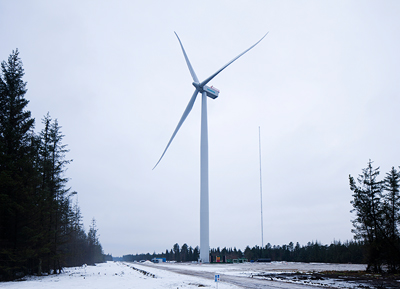|
Siemens launches new 4-megawatt offshore wind turbine
Platform strategy drives industrialization of wind power sector
Siemens Energy launched its new offshore wind turbine - the SWT 4.0-130 at
the annual conference of the European Wind Energy Association (EWEA) in
Vienna.
This new wind turbine features a generating capacity of four megawatts (MW) and a
rotor diameter of 130 meters. The new design is a further advancement of the popular
SWT 3.6 family, more units of which have been sold and installed worldwide than
any other offshore wind turbine. Siemens took the opportunity of the EWEA Conference
to also introduce its new platform concept for wind turbines. In the future, each
of Siemens¡¦s wind turbine types will be bundled under the umbrella of one of four
product platforms. The objective of this platform strategy is to standardize and
modularize the products.
Siemens new SWT 4.0-130 wind turbine utilizes all of the key technologies of the
proven 3.6-MW family. The nacelle and tower are advanced variants of the 3.6-MW
wind turbine design. The rotor blades are manufactured using Siemens¡¦ proven IntegralBlade
process, cast in a single piece without use of adhesive bonding. The
new B63 rotor blade, measuring 63 meters in length, is the longest and technologically
most advanced blade in the 4-megawatt class. The B63 sweeps an area
equivalent almost to the size of two football fields. Thanks to optimized coupling of
blade bending and twisting, these aeroelastic blades react more flexibly to high wind
loads, absorbing forces similarly to the cushioning effect of shock absorbers on
cars.
This technology allows use of longer rotor blades, which boosts wind power capture
and thus increases unit performance.
Source: Meike Wulfers, Stephan Heimbach
Siemens Energy Sector
Wind Power Division
www.siemens.com
03.02.2013
|
PennEnergy
Weekly Newscast
.

+
+ Media Links + +







For more information, media details or
sample copies please contact
wilhelms@pennwell.com
www.sicking.de
|





